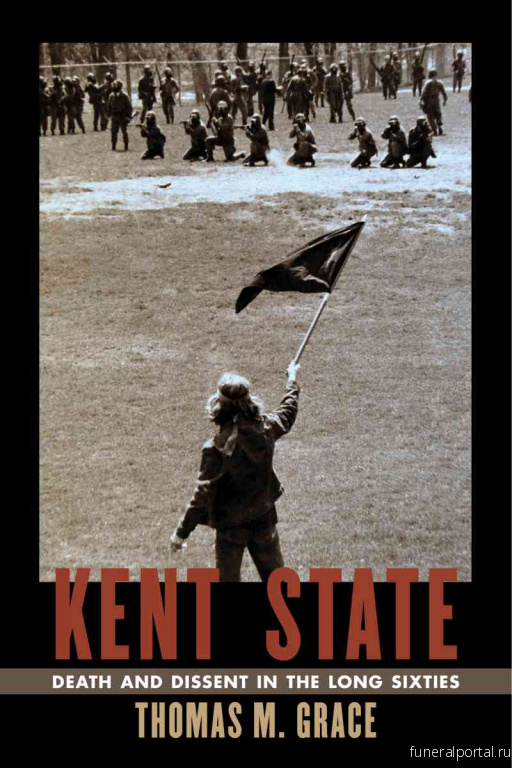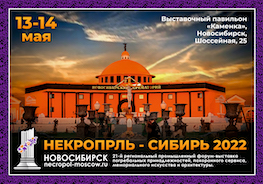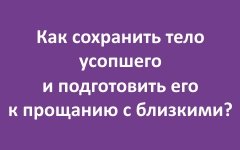This famous Pulitizer Prize-winning photograph taken by John Filo on May 4, 1970, shows Mary Ann Vecchio kneeling over the body of Kent State University student Jeffrey Miller minutes after he was shot and killed by members of the Ohio Army National Guard at a demonstration protesting President Richard Nixon's extension of the Vietnam War into Cambodia. Miller was one of four people killed. Contributed Photo
From left, Kent State University students Allison Krause, William Schroeder, Sandra Scheuer and Jeffrey Miller were killed by bullets fired by members of the Ohio Army National Guard on May 4, 1970. COURTESY KENT STATE UNIVERSITY WEBSITE
Anti-war demonstrators raise their hands toward the White House as they protest the shootings at Kent State and the U.S. incursion into Cambodia, on the Ellipse in Washington, D.C., on May 9, 1970. AP FILE PHOTO
A group of young people cluster around a wounded person on May 4, 1970, as Ohio National Guardsmen wearing gas masks hold their weapons in the background, on the Kent State University campus in Kent, Ohio, on May 4, 1970. AP FILE PHOTO
Ohio National Guard members move in on students at Kent State University in Kent, Ohio, on May 4, 1970. AP FILE PHOTO
A Kent State University student lies on the ground after Ohio National Guardsman fired into a crowd of demonstrators on May 4, 1970, in Kent, Ohio. AP FILE PHOTO
Three unidentified young people hold flowers as they stand outside Riverside Memorial Chapel in New York City, where services were held, May 7, 1970, for 20-year-old Jeffrey Miller, one of the students slain when Ohio National Guardsmen opened fire during a demonstration on the campus of Kent State University in Ohio three days prior. AP FILE PHOTO
Thousands of people crowd around the cortege bearing the body of Jeffrey Glenn Miller after funeral services in New York, May 7, 1970. Miller, a 20-year-old student, was one of four people killed during disturbances on the Kent State University campus in Ohio on May 4, 1970. AP FILE PHOTO
By DOMENIC POLI Staff Writer
Montague resident Ferd Wulkan doesn’t recall precisely where he was 50 years ago when he learned of the Kent State massacre, but he remembers the myths it shattered and the way it invigorated anti-war activism.
Before some Ohio National Guardsmen opened fire on a crowd of demonstrators on May 4, 1970, killing four and wounding nine, much of the nation associated opposition to the Vietnam War with rich, privileged elites living in coastal cities. But many of the roughly 400 active protesters and 1,500 onlookers in the middle of the campus that day belonged to working-class families.
“It really changed the perception of the anti-war movement,” said Wulkan, 71, a coordinating committee member of Franklin County Continuing the Political Revolution, a progressive organization. “A lot of people realized there was this thing called U.S. imperialism.”
The war in Vietnam was a polarizing issue from the start and tensions rose when President Richard M. Nixon, who was elected in 1968 on a promise to end the conflict, announced April 30, 1970, the incursion of ground troops into Cambodia. College students went on strike across the country, including at the Amherst and Boston campuses of the University of Massachusetts, according to UMass Amherst history professor Christian Appy, an authority on all aspects of the Vietnam War.
Appy explained a noontime rally was planned on the Kent State campus so students could vote whether to go on strike. They were met by National Guardsmen sent by Ohio Gov. James Rhodes in response to rising tensions in Kent. The unarmed students were asked to leave and refused, resulting in Guardsmen using tear gas to disperse the crowd. Students threw rocks and some of the tear gas canisters at the unit and 28 Guardsmen began shooting.
Approximately 67 bullets were fired in 13 seconds that changed the country.
Students Allison Krause, William Schroeder, Sandra Scheuer and Jeffrey Miller were killed. John Filo’s photo of 14-year-old Mary Ann Vecchio kneeling over the Miller’s dead body minutes after the shooting had stopped won a Pulitzer Prize.
Wulkan, who had graduated from the Massachusetts Institute of Technology in 1968, was living in Boston at the time of the massacre and was active in the anti-war movement.
“It freaked out the government. This movement was really becoming kind of a working-class movement,” he said, adding that the Kent State activists were heroic. “But the ruling class will fight back really hard and they really don’t want to see their power threatened. And this was a point in American history where there really was an incredible movement.”
David Lewis, chair of the Greenfield Republican Town Committee, had gotten out of the military in 1969, having served in the U.S. Air Force. He had been stationed in Okinawa, Japan, for two years. Like Wulkan, he does not remember exactly where he was May 4, 1970, but he knows he was living on the South Shore and working in retail. He said he was taken aback by what he learned had happened at Kent State.
“It wasn’t a good thing but, being a veteran, I can see why these (Guardsmen) might have panicked and starting shooting. It wasn’t the right thing, but it happened,” said Lewis, 76. “I think a lot of things were learned that day. I don’t know who gave the command to shoot. It shouldn’t have happened and I think they could handled it a little bit better. Somebody overreacted.”
Boiling pointProtests popped up across the United States, and the following day, a disturbance in downtown Kent in which students built bonfires in the streets and broke some storefront windows prompted Mayor Leroy Satrom to declare a state of emergency and ordered all the bars closed. But this decision only increased the size of the disgruntled crowd. Arsonists burned down the campus ROTC building on May 2 and Satrom called Rhodes to request National Guard troops be sent to Kent.
“When students woke up that morning, they felt their campus had turned into an occupied territory,” Appy said.
A history professor at UMass since 2004, Appy has authored three books about the American war in Vietnam — “American Reckoning: The Vietnam War and Our National Identity,” “Patriots: The Vietnam War Remembered From All Sides,” and “Working-Class War: American Combat Soldiers and Vietnam.”
During his years of research, Appy befriended Dr. Thomas Grace, who survived the shooting and was shot in the left heel. Grace, who lives in Amherst, N.Y., wrote his own book, “Kent State: Death and Dissent in the Long Sixties,” in 2016. In it, he details the events of that fateful day.
Grace told the Greenfield Recorder he had been involved in earlier protests. The war had previously hit home for him — his girlfriend’s brother had been killed serving in the U.S. Marine Corps on April 27, 1968, and a friend’s brother had been killed just weeks before the Cambodian incursion.
“It wasn’t abstract for us,” he said last week. “It was happening to people we knew and cared about.”
He promised his girlfriend he wouldn’t go to the noontime rally but decided to check it out after a history class. His roommate and close friend, Alan Canfora, who was shot in the right wrist, can be seen waving a black flag in photos of the event.
Grace double-majored in political science and history, due in part to his lifelong fascination with a conflict that claimed the lives of two of his ancestors — the American Civil War, when different sides of the nation fought against each other. But he never imagined he would find himself wounded in an eerily similar scenario 105 years after “the war between the states.”
Grace, 70, said when the shooting started, he managed to take one or two steps before being knocked to the ground by a bullet that ripped off the right side of his left foot, leaving a cavity that remains to this day. He said falling to the ground likely saved his life — he could hear the bullets whizzing over his head. A member of the Kent State football team eventually helped get Grace to a dormitory, where he was loaded onto a gurney and placed in an ambulance next to Sandra Scheuer, who was killed by a bullet to the neck.
“They didn’t fire any warning shots and just started letting loose,” he recounted, adding that the Guardsmen had M1 Garand rifles affixed with bayonets.
Grace said he spent 13 days in Robinson Memorial Hospital, where his mother, a nurse, convinced a surgeon not to amputate his foot. He was transferred to a facility in his hometown of Syracuse, N.Y., and returned to campus, which was shut down for six weeks after the massacre, the third week of September. He graduated in 1972.
Grace said 24 students and one professor were indicted. Appy said eight National Guardsmen were indicted, but the judge threw out the case.
The President’s Commission on Campus Unrest, established by Nixon, concluded that the violent acts against the students “were unnecessary, inexcusable and completely unwarranted.”
“In my mind, it’s no different than murder. They were firing upon unarmed students,” Appy said this week, adding that the Vietnam War was “not simply a mistake,” but actually “unjust and unconstitutional and immoral.”
The massacre is memorialized in the song “Ohio,” written by Neil Young and performed by Crosby, Stills, Nash & Young.
Puncturing mythsAppy and Grace said rumors still persist about the massacre and those there that day.
Both said one myth is that students who opposed the war were unpatriotic communist sympathizers who were afraid to fight. However, Appy said, 1,000 Kent State students in 1970 were military veterans, and Grace said dozens of them were at that rally. Young people trying desperately to bring their countrymen home from a war zone suddenly found themselves in the middle of one at home.
“Fifty years ago, our nation experienced civil unrest on home soil and war overseas. May 4, 1970, is a date forever etched in history, as four students lost their lives and nine others were injured at Kent State University,” Stephanie Beougher, public information officer Ohio National Guard Office of Public Affairs’ Adjutant General’s Department, said in an email to the Recorder. “Each year, this anniversary serves as a reminder of the tremendous responsibility accompanying military service in the National Guard and how our force continues to learn and adapt from those who served before us.
“Five decades have passed, but the effects of May 4, 1970, are still with us today,” Beougher added. “We must never forget the lessons learned. As Ohioans, we will always remember the students, families, community members and Guardsmen whose lives were forever changed that day.”
Grace, who now teaches history at SUNY Erie Community College, said there is also a misconception that the National Guardsmen were poorly trained. He said they were a very experienced state militia unit.
“There’s a difference between being poorly trained and not using the training you’ve had,” he said. “It can take 40 or 50 years for an historical myth to be set aside, if at all.”
The Kent State massacre was followed by a similar incident at Jackson State College (now Jackson State University) in Mississippi shortly after midnight on May 15, 1970, when demonstrators Phillip Lafayette Gibbs and James Earl Green were shot dead by police.
Never forgetGrace said he and Canfora are involved in the May 4, 50th Commemoration.
According to Kent State University’s website, the global COVID-19 pandemic has forced the event to go virtual.
“It is impossible to replace the very moving and solemn experience of the physical May 4 Commemoration with something that occurs online,” university President Todd Diacon said in a statement on the website. “However, we knew it was important to remember and honor the events of May 4, 1970, even in the midst of all that was happening in the world due to the COVID-19 pandemic. We remain committed to the ongoing legacy of May 4, 1970, and look forward to future commemorations and educational initiatives surrounding this important moment in history.”
Actress Tina Fey and her husband, Kent State alumnus Jeff Richmond, are lending their voices and talents to a newly recorded version of “May 4th Voices,” the play by David Hassler, Kent State’s director of the Wick Poetry Center. This new version of the play will be broadcast on several public radio stations and also will be available for streaming directly from the May 4 50th Commemoration website at bit.ly/2WcSYes.
Visitors to the online May 4th Commemoration can also watch a variety of videos, including past speakers, interviews with May 4 survivors, tours of the May 4 Visitors Center and the National Historic Landmark site, and more, according to the website. Links to special exhibits on the May 4 Task Force, Jackson State University, the campus strike of 1970 and others will be available for viewing online. The May 4 Augmented Reality Tour and the Mapping May 4 project, will also debut during the online commemoration.
The crowd at Kent State that day included students Joe Walsh, guitarist for The Eagles, and Chrissie Hynde, lead singer of The Pretenders.

How the Kent State massacre marked the start of America's polarization
https://www.theguardian.com/us-news/2020/may/04/kent-state-massacre-marked-start-of-americas-polariz...
THE MAY 4 SHOOTINGS AT KENT STATE UNIVERSITY: THE SEARCH FOR HISTORICAL ACCURACY
https://www.kent.edu/may-4-historical-accuracy
Thomas M. Grace discusses Kent State: Death and Dissent in the Long Sixties. He will be joined in conversation William Ayers. https://www.semcoop.com/event/fresh-ayers-thomas-m-grace-kent-state-william-ayers










